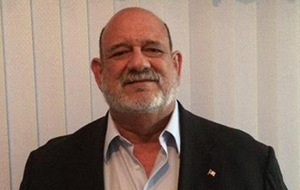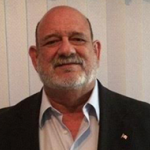IT exists to serve customers, in whatever shape or form those customers may take. As such, IT groups need to learn how to effectively understand and deal with customers. That is certainly true if your company is a managed service provider (MSP), in which case customers can pull the plug and walk away if they are unhappy with your service. With this in mind, for tips on how to better understand customers, I talked with Ken Pereria, who is director of customer support for Medco Data, an MSP in Tampa, Fla.
The MSP gig is relatively new for Pereria, who joined Medco Data in September 2014. Before that, he spent about seven years at St. Petersburg College as director of learning management and computer operations as well as another three years or so helping Trinity College and Toccoa Falls College implement online learning programs. In short, he's got the IT side of the equation covered but also has extensive experience in dealing directly with customers about their IT requirements.

The Enterprisers Project (TEP): What is a unique or creative step you have taken to better understand your customers?
 Pereria: A couple of things. First, as part of the onboarding process at Medco Data, new employees go with a customer service representative to visit them on site to get a sense of what the environment is like. We handle a lot of their support over the phone and across the web, so they talk to probably 30 people per day but never see their work environment. A lot of them are medical environments, where the receptionist at the front desk may not seem critical but certainly is. She is greeting patients, processing insurance, getting things set up for doctors – it is a highly critical, pivotal point in that practice. For one of my employees to understand that, they have to visualize it.
Pereria: A couple of things. First, as part of the onboarding process at Medco Data, new employees go with a customer service representative to visit them on site to get a sense of what the environment is like. We handle a lot of their support over the phone and across the web, so they talk to probably 30 people per day but never see their work environment. A lot of them are medical environments, where the receptionist at the front desk may not seem critical but certainly is. She is greeting patients, processing insurance, getting things set up for doctors – it is a highly critical, pivotal point in that practice. For one of my employees to understand that, they have to visualize it.
The other thing we do is have employees listen to the different techniques we use when talking with clients, many of which are doctors and nurses. They are intelligent professionals; they are just not technologists. So we have to get them up to speed on learning to talk with and listen to those types of professionals. When they say, “I cannot stay on the phone, I have a patient,” you have to take that minuscule opportunity and work it and get as much information as you can. We have really pushed listening for the small things.
TEP: What about the most experienced folks – how do you ensure they continue to understand customers and service them well?
Pereria: We record all our phone calls. Every day I pick out about four or five calls and take different technologists in (individually) and listen together, and talk about what we could’ve done better. I also do the good ones, tell them it was fantastic the way they de-escalated the customer, got what they needed, took care of them in record time, and made our company look awesome. However, I never use it as a whipping post, only as a tool to encourage them or help them improve.
TEP: How has this challenge changed over the years? Is it easier or more difficult now to understand what customers want or need?
Pereria: I think it is more difficult. We no longer go face-to-face to take care of our customers – we do it across the web. Unless you are listening well to the customer, you will not recognize when they are starting to get dissatisfied. Moreover, you do not always have an immediate solution, so I always tell guys – realize we are keeping customers from doing their jobs by asking questions and involving them in our efforts. So if you get enough information but need time to research, tell them that and tell them you will call them back and when. Moreover, then you better call them back at that time.
TEP: How do you differentiate customers wants from needs?
Pereria: It all gets back to listening. When a customer says “I want this,” and it is really not the best thing for them, then we have to be prepared to have a roadmap that takes them where they want to go. We try to show them, “This does not match up with what you are doing but let’s look at things that will be beneficial. You are growing at 15 percent per quarter, let’s plan and do some things that’ll help the business continue to thrive.”
TEP: Any advice for other CIOs who want to get closer to their customers?
Pereria: Stay in touch with customers. Work within the organization and find where you touch the customer. Then make sure those internal people are taken care of and can do the job of touching the customer. I realized immediately the support desk touched customers more than anyone else and went to work on those guys. I sat them down and asked what they needed. Each one handed me a list and within two weeks we had equipment for them. Then I asked what training do you need, and we got some folks certified in technologies such as VMware. Now we have a team of six guys who are just tearing it up.





